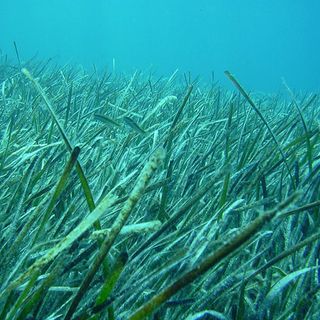The giant Larvacean (Bathochordaeus) is a 10-centimeter long tadpole-like creature, but the mucus it secretes can fan out around it by up to one meter. For the larvacean, this is a feeding apparatus, but for the environment, its carbon absorption abilities are one step forward in the battle against global warming.
Though the Larvacean itself was discovered a long time ago, its feeding apparatus has always been a mystery to scientists. According to a new study conducted by Nature and the Monterey Bay Aquarium Research Institute (MBARI) in the U.S., scientists discovered a way to visualize the Larvacean’s feeding apparatus in great detail. Plus, they also saw how water is filtered through the mucus filters that the larvacean builds and inflates. The Larvacean has two filters — a coarse, external one that traps debris too big for the creature, and an internal filter that guides the food into the creature’s mouth. These mucus filters also trapped large quantities of carbon, which floats through the oceans. Once this filter gets clogged, the giant Larvacean abandons this filter to the deep seafloor and moves on.
Usually, the carbon particles that float through oceans are eaten by other organisms, which keeps it floating through the food chain. An increase in oceans absorbing and holding carbon compounds like carbon dioxide will both heat the oceans and disrupt marine ecosystems, and lead to saturation, resulting in more carbon dioxide in the atmosphere. The Larvacean’s mucus filter traps a significant amount of carbon during its constant water filtration process, which goes through about 21 gallons an hour. The total number of giant Larvaceans in the Monterey Bay in California, U.S., could filter up the equivalent of 500 Olympic-sized swimming pools per hour, according to a report by the Los Angeles Times.
Essentially, the giant Larvacean is filtering huge amounts of carbon dioxide and sinking it into the deep sea — away from the food chain, the atmosphere.
Related on The Swaddle:
Scientists Have Found the Longest Marine Organism on Australia’s Western Edge
“Mucus is ubiquitous in the ocean, and complex mucous structures are made by animals for feeding, health, and protection. Now that we have a way to visualize these structures deep below the surface we can finally understand how they function and what roles they play in the ocean,” Kakani Katija, a researcher on this project, and the head of the Bioinspiration Lab at MBARI, said in a statement.
“Among other things, we’re hoping to understand how larvaceans build and inflate these structures,” Katija added. Though scientists believe that more research is necessary to understand how the Larvacean’s mucous membranes are built and inflated, they see tremendous potential in understanding and replicating the Larvacean’s carbon transporting process, in order to better assess and combat the impact of climate change.




